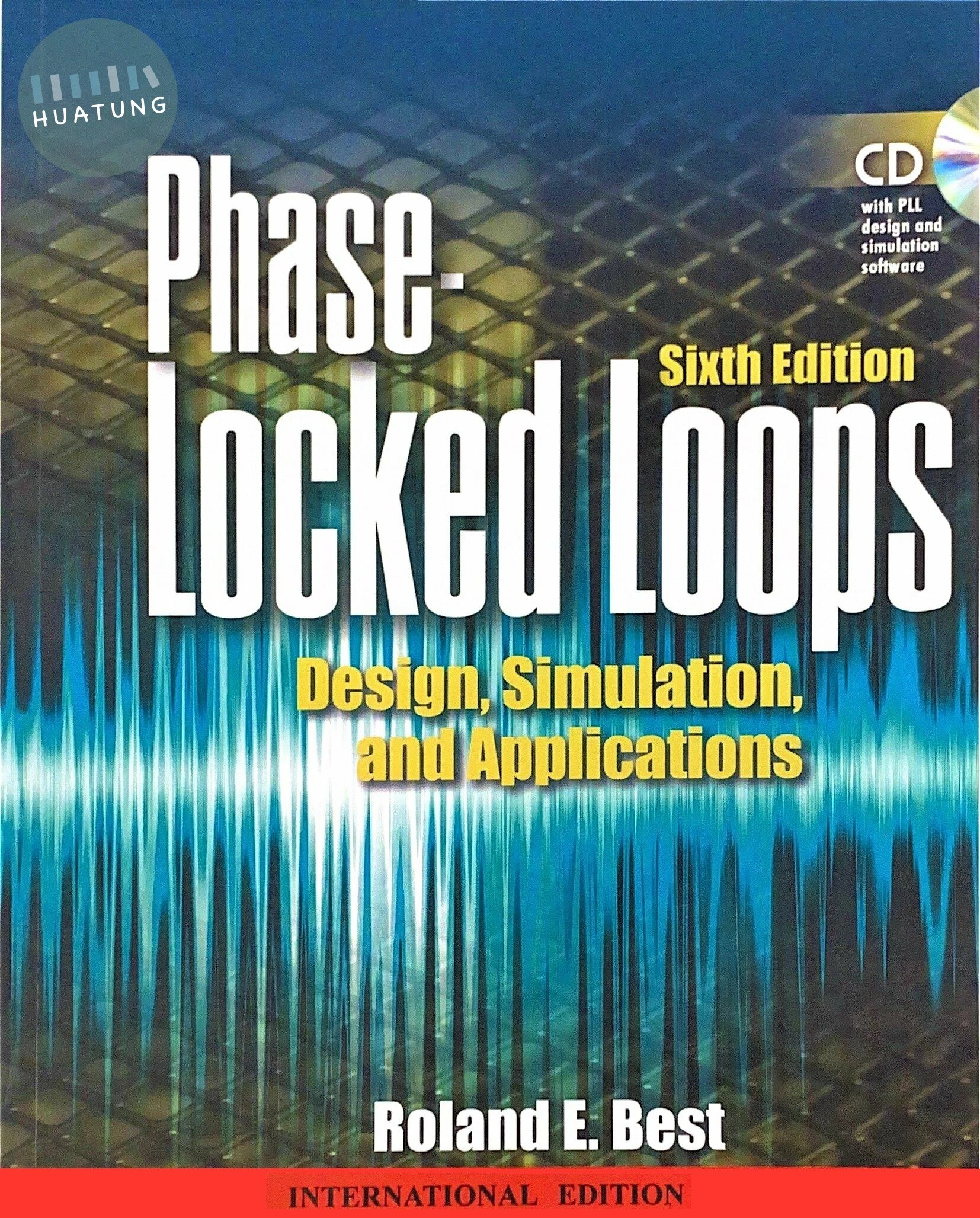【中文翻譯書】
書名 : 離散時間訊號處理
原文作者 : Oppenheim
原文書名 : Discrete-Time Signal Processing 3/e
譯者 : 陳常侃、王鵬華、丁建鈞
出版社 : 全華
書號 : 18041
ISBN : 9789862800089
內容簡介
第1章「簡介」數位訊號處理的概述、歷史與未來發展。
第2章「離散時間訊號與系統」:介紹離散時間訊號與系統的基本類別,並定義一些基本的特性,如線性、非時變形、穩定性、因果律等。
第3章「z轉換」:建立z轉換的基本理論與特性,以及逆z轉換的一些方法。
第4章「連續時間訊號的取樣」:討論當離散時間訊號主要是由週期取樣連續時間訊號而來時,連續時間訊號與離散時間訊號會有什麼樣的關係性,其中也包含Nyquist取樣定理的建立。
第5章「線性非時變系統的轉換分析」:深入探討線性非時變系統的特性。
第6章「離散時間系統的結構」:重點放在如何使用常係數線性差分方程式來表示系統,並藉由區塊圖和線性訊號流程圖來建立他們的表示法。
第7章「濾波器設計技巧」:討論如何獲得線性差分方程式的係數來近似我們所要求的系統響應。
第8章「離散傅立葉轉換」:介紹離散傅利葉轉換的性質,並詳細討論其和離散時間傅利葉轉換的相關性。
第9章「計算離散傅利葉轉換」:討論用來計算與實現DFT的各種重要演算法,其中包含Goertzel演算法、快速傅利葉轉換演算法及啾聲轉換。
第10章「使用離散傅立葉轉換進行訊號的傅立葉分析」:著重於使用DFT來對訊號做傅利葉分析。
第11章「參數訊號模型」:主要探討參數訊號模型等議題。
第12章「離散希爾伯特轉換」:討論離散希爾伯特轉換及應用。
第13章「倒頻譜分析與同態解旋積」:深入討論倒頻譜。
目錄
第1章 簡介
第2章 離散時間訊號與系統
第3章 z轉換
第4章 連續時間訊號的取樣
第5章 線性非時變系統的轉換分析
第6章 離散時間系統的結構
第7章 濾波器設計技巧
第8章 離散傅立葉轉換
第9章 計算離散傅立葉轉換
第10章 使用離散傅立葉轉換進行訊號的傅立葉分析
第11章 參數訊號模型
第12章 離散希爾伯特轉換
第13章 倒頻譜分析與同態解旋積
附錄A 隨機訊號
附錄B 連續時間濾波器
附錄C 部份基本問題的解答
立即查看

Introduction to Algorithms (4版)
其他會員也一起購買
【原文書】
書名:Introduction to Algorithms 4/e (美國原版精裝本)
作者: T. H. Cormen、C. E. Leiserson、R. L. Rivest、 C.Stein
出版社:MIT
出版日期: 2022/00/00
ISBN:9780262046305
內容簡介
A comprehensive update of the leading algorithms text, with new material on matchings in bipartite graphs, online algorithms, machine learning, and other topics.
Some books on algorithms are rigorous but incomplete; others cover masses of material but lack rigor. Introduction to Algorithms uniquely combines rigor and comprehensiveness. It covers a broad range of algorithms in depth, yet makes their design and analysis accessible to all levels of readers, with self-contained chapters and algorithms in pseudocode. Since the publication of the first edition, Introduction to Algorithms has become the leading algorithms text in universities worldwide as well as the standard reference for professionals. This fourth edition has been updated throughout.
New for the fourth edition
New chapters on matchings in bipartite graphs, online algorithms, and machine learning
New material on topics including solving recurrence equations, hash tables, potential functions, and suffix arrays
140 new exercises and 22 new problems
Reader feedback-informed improvements to old problems
Clearer, more personal, and gender-neutral writing style
Color added to improve visual presentation
Notes, bibliography, and index updated to reflect developments in the field
Website with new supplementary material
Table of contents
Preface xiii
I Foundations
Introduction 3
1 The Role of Algorithms in Computing 5
2 Getting Started 17
3 Characterizing Running Times 49
4 Divide-and-Conquer 76
5 Probabilistic Analysis and Randomized Algorithms 126
II Sorting and Order Statistics
Introduction 157
6 Heapsort 161
7 Quicksort 182
8 Sorting in Linear Time 205
9 Medians and Order Statistics 227
III Data Structures
Introduction 249
10 Elementary Data Structures 252
11 Hash Tables 272
12 Binary Search Trees 312
12 Red-Black Trees 331
IV Advanced Design and Analysis Techniques
Introduction 361
14 Dynamic Programming 362
15 Greedy Algorithms 417
16 Amortized Analysis 448
V Advanced Data Structures
Introduction 477
17 Augmenting Data Structures 480
18 B-Trees 497
19 Data Structures for Disjoint Sets 520
VI Graph Algorithms
Introduction 547
20 Elementary Graph Algorithms 549
21 Minimum Spanning Trees 585
22 Single-Source Shortest Paths 604
23 All-Pairs Shortest Paths 646
24 Maximum Flow 670
25 Matchings in Bipartite Graphs 704
VII Selected Topics
Introduction 745
26 Parallel Algorithms 748
27 Online Algorithms 791
28 Matrix Operations 819
29 Linear Programming 850
30 Polynomials and the FFT 877
31 Number-Theoretic Algorithms 903
32 String Matching 957
33 Machine-Learning Algorithms 1003
34 NP-Completeness 1042
35 Approximation Algorithms 1104
VIII Appendix: Mathematical Background
Introduction 1139
A Summations 1140
B Sets, Etc. 1153
C Counting and Probability 1178
D Matrices 1214
Bibliography 1227
Index 1251
原價:
2190
售價:
2081
現省:
109元
立即查看

CMOS VLSI 設計原理 (3版)
其他會員也一起購買
【中文翻譯書】
書名:CMOS VLSI 設計原理 電路與系統探討 第三版
原文書名:CMOS VLSI Design:A Circuits and Systems Perspective
原文作者:Weste
中文譯者: 周世傑
出版社:偉明
出版日期:2010/05/20
ISBN:9789861548272
立即查看

AE Principles of Economics (10版)
其他會員也一起購買
書名:PRINCIPLES OF ECONOMICS 10/E
作者:Mankiw
出版社:CENGAGE
出版日期:2024/00/00
ISBN:9789815119299
目錄
Part I: INTRODUCTION.
1. Ten Principles of Economics.
2. Thinking Like an Economist.
3. Interdependence and the Gains from Trade.
Part II: HOW MARKETS WORK.
4. The Market Forces of Supply and Demand.
5. Elasticity and Its Application.
6. Supply, Demand, and Government Policies.
Part III: MARKETS AND WELFARE.
7. Consumers, Producers, and the Efficiency of Markets.
8. Applications: The Costs of Taxation.
9. Application: International Trade.
Part IV: THE ECONOMICS OF THE PUBLIC SECTOR.
10. Externalities.
11. Public Goods and Common Resources.
12. The Economics of Healthcare.
13. The Design of the Tax System.
Part V: FIRM BEHAVIOR AND THE ORGANIZATION OF INDUSTRY.
14. The Costs of Production.
15. Firms in Competitive Markets.
16. Monopoly.
17. Monopolistic Competition.
18. Oligopoly.
Part VI: THE ECONOMICS OF THE LABOR MARKET.
19. The Markets for the Factors of Production.
20. Earnings and Discrimination.
21. Income Inequality and Poverty.
Part VII: TOPICS FOR FURTHER STUDY.
22. The Theory of Consumer Choice.
23. Frontiers in Microeconomics.
Part VIII: THE DATA OF MACROECONOMICS.
24. Measuring a Nation’s Income.
25. Measuring the Cost of Living.
Part IX: THE REAL ECONOMY IN THE LONG RUN.
26. Production and Growth.
27. Saving, Investment, and the Financial System.
28. The Basic Tools of Finance.
29. Unemployment.
Part X: MONEY AND PRICES IN THE LONG RUN.
30. The Monetary System.
31. Money Growth and Inflation.
Part XI: THE MACROECONOMICS OF OPEN ECONOMICS.
32. Open-Economy Macroeconomics: Basic Concepts.
33. A Macroeconomic Theory of the Open Economy.
Part XII: SHORT-RUN ECONOMIC FLUCTUATIONS.
34. Aggregate Demand and Aggregate Supply.
35. The Influence of Monetary and Fiscal Policy on Aggregate Demand.
36. The Short-Run Trade-off between Inflation and Unemployment.
Part XIII: FINAL THOUGHTS.
37. Six Debates over Macroeconomic Policy.
Appendix: How Economists Use Data.
原價:
1580
售價:
1485
現省:
95元
立即查看

無線通訊射頻晶片模組設計 ~ 射頻晶片篇2/e (2版)
其他會員也一起購買
【中文書】
書名 : 無線通訊射頻晶片模組設計-射頻晶片篇(第二版)
作者 : 張盛富、張嘉展
出版社 : 全華
ISBN : 9789572197790
內容簡介
本書內容包含微波半導體元件與模型、射頻放大器、功率放大器與線性化技術、振盪器及混頻器。且特別注重文獻參考資料,以彰顯射頻知識的傳承。另外為增加思考廣度,列舉了不同的電路分析方法。本書適用於私立大學、科大電子系「射頻系統導論」之相關課程。
本書特色
1.針對無線通訊產品中之射頻晶片(含混成晶片、CMOS、PHEMT晶片)作詳盡之介紹。
2.列舉各種設計理論和分析方法,以增加思考廣度。
3.重視文獻回顧,以彰顯射頻知識的沿革。
4.提供模擬和實作例題,以便使讀者更加了解射頻晶片。
目錄
第7章 半導體元件與模型
7.1 半導體物理概述 2
7.2 二極體元件 17
7.3 雙極性電晶體(Bipolar Junction Transistor , BJT) 26
7.4 異質接面雙極性電晶體(Hetrojunction Bipolar Transistor, HBT) 32
7.5 接面場效電晶體(Junction Field Effect Transistor, JFET) 35
7.6 金氧半場效電晶體(Metal-Oxide-Semiconductor Field Effect Transistor , MOSFET) 37
7.7 金半場效電晶體(Metal- Semiconductor Field Effect Transistor , MESFET) 42
7.8 高速電子移動電晶體(High Electron Mobility Transistor , HEMT) 43
7.9 半導體參數測試及元件特性分析 47
7.10 微波元件特性及模型 49
第8章 射頻放大器
8.1 混成射頻放大器與單晶射頻放大器 66
8.2 輸出與輸入功率的比值-增益 69
8.3 訊號波流理論(Signal Flow Theory) 73
8.4 穩定度分析 83
8.5 消除不穩定的方法 91
8.6 直流偏壓電路 103
8.7 單向增益匹配 108
8.8 雙向增益匹配 111
8.9 功率匹配 115
8.10 雜訊匹配 119
8.11 設計實例 125
第9章 功率放大器與線性化技術
9.1 功率放大器特性之概述 148
9.2 功率放大器之類別 150
9.3 克里普斯(Cripps)負載線法 166
9.4 負載拉挽方法(Load-Pulling Method) 175
9.5 回饋線性化技術 177
9.6 前饋線性化(Feedforward Linearization)技術 184
9.7 前置失真技術(Pre-Distortion) 186
9.8 封包消弭與回復技術(Envelope Elimination and Restoration) 188
9.9 功率放大器設計實例 189
第10章 振盪器
10.1 簡介 200
10.2 形成振盪的必要條件-小訊號負電阻分析法 202
10.3 形成振盪的必要條件-小訊號迴授分析法 206
10.4 形成振盪的必要條件-小訊號S參數分析法 211
10.5 形成振盪的充份且必要條件-根軌跡法 215
10.6 形成振盪的充份且必要條件-阻抗軌跡法 219
10.7 穩定振盪功率-大訊號Y參數分析法 226
10.8 穩定振盪功率-大訊號S參數分析法 230
10.9 負載拉挽效應 233
10.10 注入鎖定效應 236
10.11 評估振盪器效能之各項參數 238
10.12 設計實例 241
第11章 混頻器
11.1 混頻器之發展與效能參數 260
11.2 單端二極體混頻器 264
11.3 單平衡二極體混頻器 275
11.4 雙平衡二極體混頻器 294
11.5 單閘極MESFET混頻器 302
11.6 雙閘極MESFET混頻器 306
11.7 平衡型MESFET混頻器 308
11.8 電阻型MESFET混頻器 312
11.9 單端MOSFET混頻器 316
11.10 平衡型MOSFET混頻器 318
11.11 電阻型MOSFET混頻器 330
11.12 平衡型BJT混頻器 332
11.13 次諧波驅動混頻器 333
11.14 鏡像拒斥降頻器 336
11.15 單邊帶升頻器 339
A 索引
立即查看

Digital Image Processing (4版)
其他會員也一起購買
原文書資訊
書名:Digital Image Processing 4/E Global Edition 2018<Pearson>4/E
作者: Woods/Gonzalez
ISBN: 9781292223049
出版社: Pearson
出版年: 2017年
中文書資訊
書名: 數位影像處理(Gonzalez & Woods:Digital Image Processing )
作者: Gonzalez/ 繆紹綱
ISBN: 9789863782155
出版社: 高立
出版年: 2019年
原價:
1390
售價:
1362
現省:
28元
立即查看

無線通訊射頻晶片模組設計-射頻系統篇 修訂版
其他會員也一起購買
【中文書】
書名:無線通訊射頻晶片模組設計-射頻系統篇(修訂版)
作者:張盛富、張嘉展
出版社:全華
ISBN: 9789572165454
內容簡介
本書特別注重文獻參考資料,作者於內文每章中總會有一段敘述該章電路的發展歷史,以彰顯射頻知識的傳承。另外也列舉了不同分析電路的方法,來增加思考的廣度,且大部分例題都經由實作量測,以驗證其可行性。此書適用於大學、科大電子系「射頻系統導論」之相關課程使用。
本書特色
1 . 針對無線通訊產品中之收發模組,進行詳細的介紹與分析。
2 . 列舉各種理論和方法,增加思考廣度。
3 . 重視文獻回顧,以彰顯射頻知識的沿革。
4 . 提供模擬和實作例題,以便使讀者更加了解射頻系統。
5 . 適用於大學、科大、技術學院電子、電訊系「射頻系統導論」、「射頻電路設計」課程使用。
目錄
第1章 射頻技術之發展
1.1 演變中的射頻與微波技術 2
1.2 射頻技術的新巔峰 4
1.3 射頻模組的設計循環 25
第2章 射頻收發架構分析
2.1 固定中頻超外差接收架構 32
2.2 正交超外差接收架構 42
2.3 直接降頻接收架構 45
2.4 精準的本地振盪訊號源鎖相迴路 52
2.5 低中頻接收架構 53
2.6 寬頻超外差接收架構 58
2.7 浮動中頻超外差接收機 59
2.8 次取樣接收架構 61
2.9 數位中頻接收架構 62
2.10 射頻接收效能的評估參數 63
2.11 射頻發射架構 74
2.12 射頻發射效能的評估參數 77
第3章 增 益
3.1 功率增益 84
3.2 輸入和輸出埠參考阻抗改變 91
3.3 模組間之連接線效應 96
3.4 串接模組之增益-已知各子電路散射參數的完整訊息 106
3.5 串接模組之增益-只有各子電路散射參數的大小訊息 110
第4章 雜 訊
4.1 熱雜訊 120
4.2 射彈雜訊 123
4.3 閃爍雜訊 124
4.4 背景雜訊 125
4.5 雜訊溫度之定義 126
4.6 雜訊指數之定義 129
4.7 雙埠電路之雜訊指數計算與量測 132
4.8 被動電路之雜訊指數 136
4.9 天線之雜訊指數 147
4.10 混頻電路之雜訊指數 147
4.11 串接模組之雜訊指數 152
4.12 相位雜訊 160
4.13 振盪器之相位雜訊指數 165
4.14 含本地振盪埠雜訊效應之串接模組雜訊指數 169
第5章 非線性效應與計算
5.1 射頻訊號之非線性效應 178
5.2 1-dB增益壓縮點之分析與量測 180
5.3 1-dB增益壓縮點之量測 185
5.4 二階截止點之分析 186
5.5 二階截止點之量測-單頻測試 189
5.6 二階截止點之量測-雙頻測試 192
5.7 三階截止點之分析 199
5.8 三階截止點之量測 207
5.9 串級電路之非線性效應計算 209
5.10 射頻多載波信號之非線性效應評量 214
5.11 射頻數位調變信號之非線性效應評量 218
第6章 射頻模組鏈路計算與模擬
6.1 射頻接收鏈路計算 226
6.2 射頻發射鏈路計算 236
6.3 數位調變訊號模擬 243
6.4 影響EVM效能的因素 257
6.5 子電路設計 263
6.6 射頻收發整合與測試 274
附錄一 284
附錄二 286
立即查看

PHASE LOCKED LOOPS DESIGN,SIMULATION,AND APPLICATIONS (6版)
其他會員也一起購買
【原文書】
書名:Phase-Locked Loops: Design, Simulation, and Applications, 6/e
作者:BEST
出版社:McGraw-Hill
出版日期:2007/07/22
ISBN:9780071266741
立即查看

Verilog硬體描述語言 (第2版/附光碟) (2版)
其他會員也一起購買
【中文翻譯書】
(附光碟)
書名:Verilog硬體描述語言 第二版
原文書名:Verilog HDL A Guide to Digital Design and Synthesis 2/e
原文作者:Samir Palnitkar
中文譯者:黃稚存
ISBN:9789861541044
1 . 本書涵蓋Verilog的廣泛內容,包含基礎Verilog語言到高階Verilog語言,都有詳盡的分析與討論。
2 . 本書對Verilog語言有充份的探討及實例說明,能幫助讀者了解Verilog的程式結構,進而學會完成設計IC的方法。
本書涵蓋Verilog HDL的廣泛內容,對邏輯合成部份有深入的探討並輔以實例說明。本書內容包含運用Verilog、階層模組的觀念、Verilog的基本概念、邏輯閘層次模型、資料處理模組、行為模型、任務與函數、有用的程式技巧及高階Verilog的邏輯設計、本書適合作為大學電子、資工「VHDL設計」、「VHDL晶片設計」等課程所使用。
立即查看

高頻交換式電源供應器原理與設計
相關熱銷的書籍推薦給您
第一章 交換式電源供應器
第二章 電源輸入部份
第三章 電源轉換器的種類
第四章 轉換器功率電晶體的設計
第五章 高頻率的功率變壓器
第六章 電源輸出部份:整流器、電感器與電容器
第七章 轉換器穩壓器的控制電路
第八章 轉換式電源轉換器周邊附加電路與元件
第九章 轉換式電源供給器穩定度分析與設計
第十章 電磁與射頻干擾(EMI-RFI)的考慮
第十一章 電源供給器電氣安全標準
立即查看

DISCRETE-TIME SIGNAL PROCESSING 1999 (SV)
類似書籍推薦給您
立即查看

DISCRETE-TIME PROCESSING OF SPEECH SIGNALS 2000 (JW) 0-7803-5386-2
類似書籍推薦給您
立即查看

電子書 Fundamentals of Electronics 3: Discrete-time Signals and Systems, and Quantized Level Systems Muret 9781786301833 2018 <JW>
類似書籍推薦給您
立即查看

Wireless Discrete-Time Receivers
類似書籍推薦給您
The first comprehensive guide to discrete-time (DT) receivers (RX), discussing the fundamental concepts and implications of the technology. This book will serve as an essential reference, covering the necessary building blocks of this field, such as low-noise transconductance amplifiers, current-driven mixers, DT band-pass filters, and DT low-pass filters. As well as addressing the basics, the authors present the most recent state-of-the-art techniques applied to the DT RX blocks. A step-by-step style is used to allow readers to develop the required skills to design the DT receivers at the architecture level, while providing in-depth knowledge of the details. Written by leading experts from academia, research, and industry, this book provides an excellent reference to the subject for a wide audience, from postgraduate students to experienced researchers and professionals working with RF circuits.
立即查看

電子書Discrete Time Branching Processes in Random Environment 2017 <JW>
類似書籍推薦給您
立即查看

 華通書坊
華通書坊





















